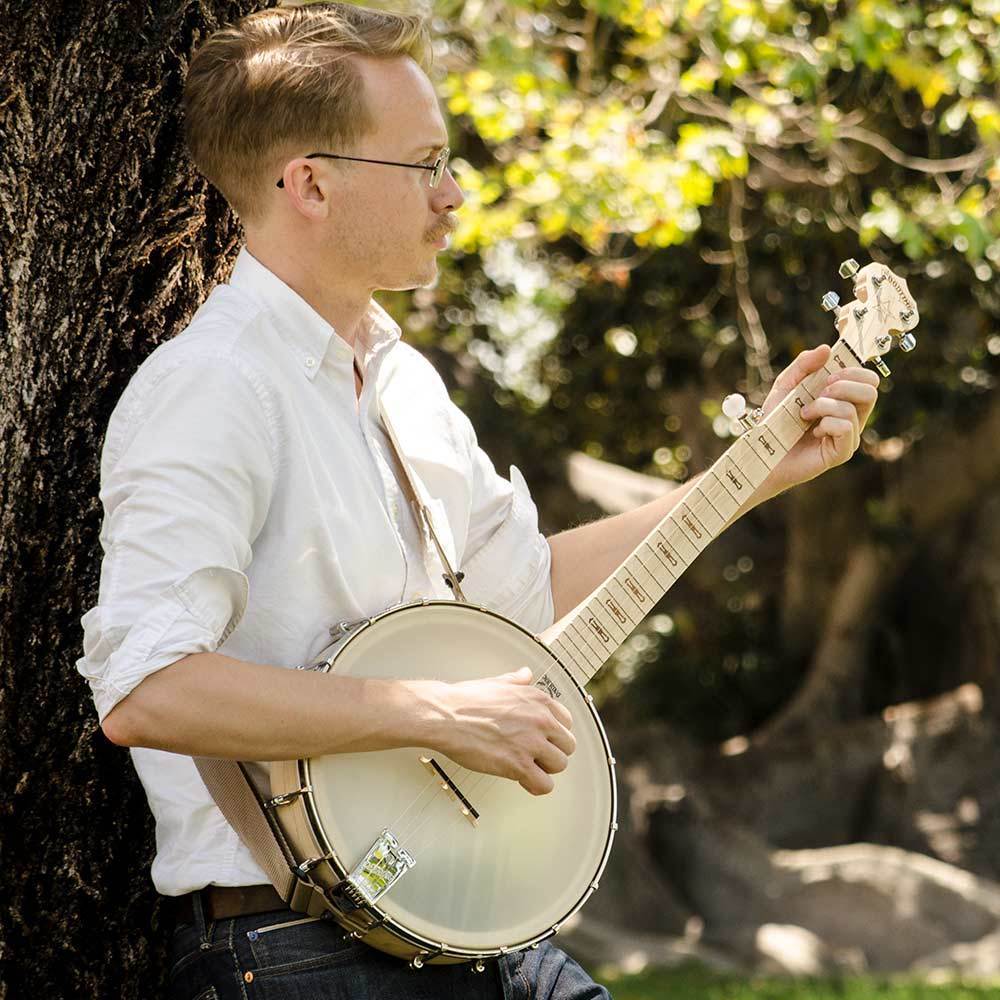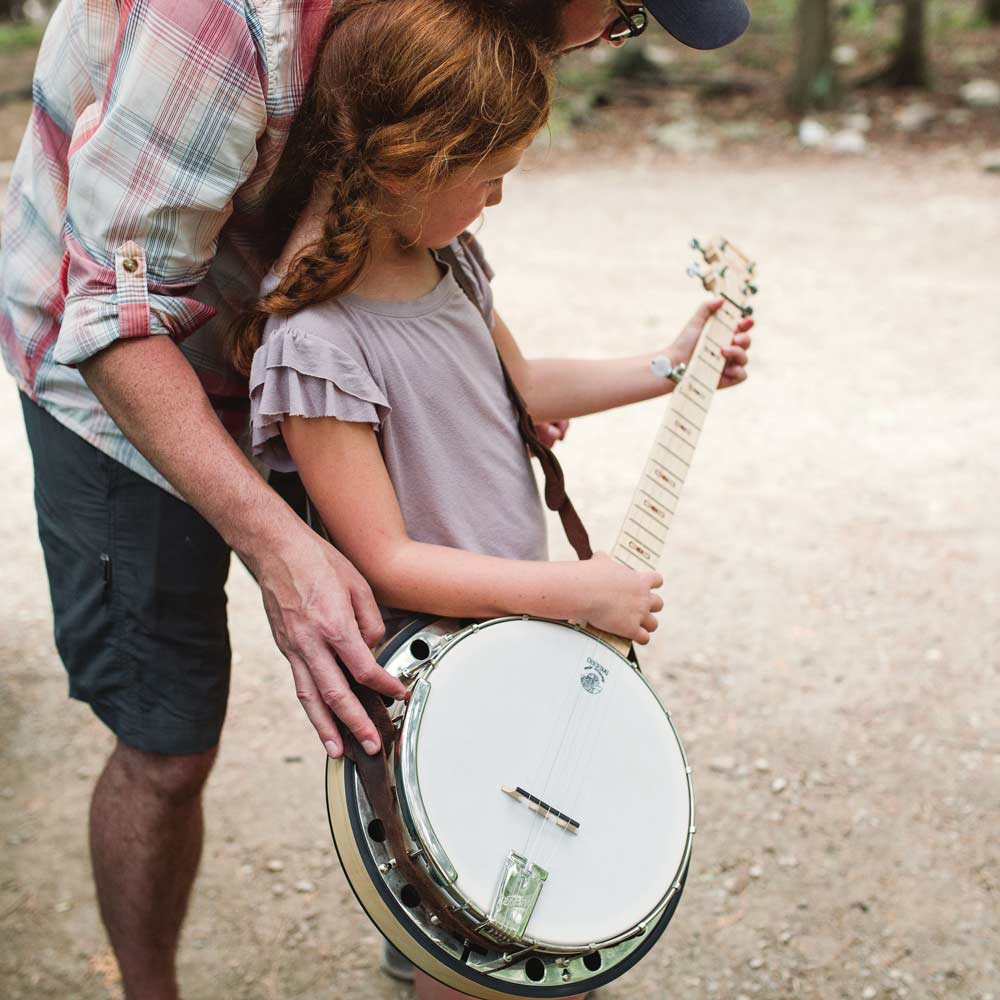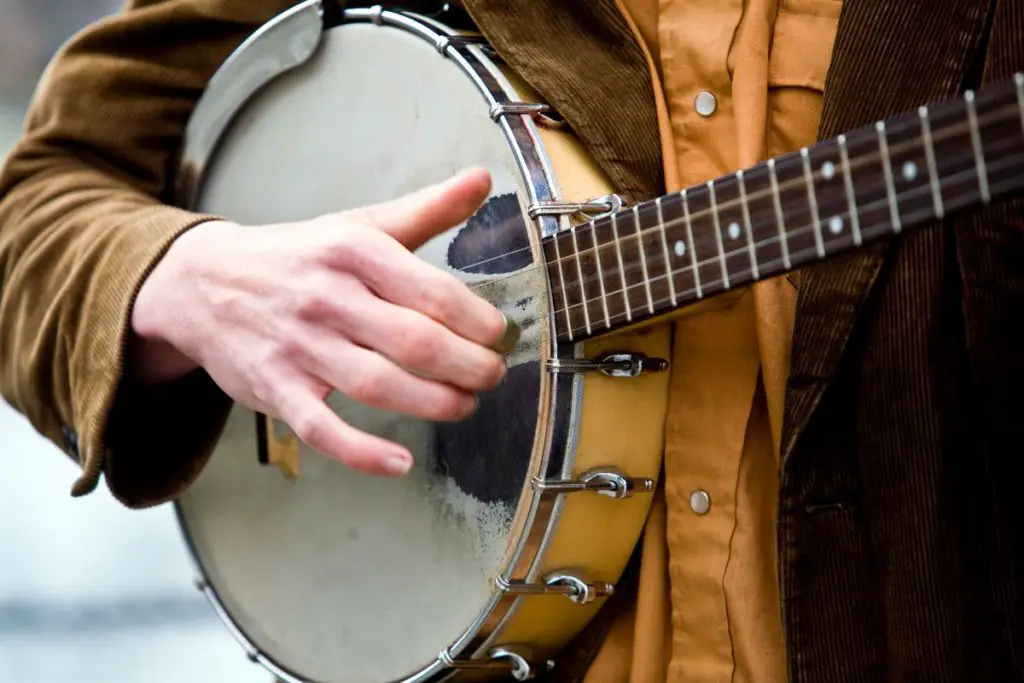The banjo is a unique and mesmerizing instrument that has captivated music enthusiasts for centuries. Its distinct sound and rich history make it a fascinating subject of study.
It’s hard to describe the sound of the banjo. It’s not just popping, or a twangy eco. To put it simply, the banjo vibrates energy and resilience.
Are you ready to uncover some wonders about the banjo that’ll change your perspective?

The Banjo in Early American Music
The banjo played a significant role in early American music, particularly in Appalachian folk and minstrel shows. It was popularized by African-American and white musicians alike.
The Banjo’s Rise to Popularity
The banjo gained mainstream popularity in the mid-19th century, becoming a staple instrument in minstrelsy and vaudeville shows. Its lively and percussive sound made it a hit with audiences.
The Banjo’s Influence on Bluegrass Music
Bluegrass music, a genre deeply associated with the banjo, emerged in the mid-20th century. Its roots can be traced back to the innovative playing style of Earl Scruggs. Scruggs developed a three-finger picking technique that revolutionized banjo playing and became synonymous with bluegrass music. His virtuosic style, characterized by fast and intricate picking patterns, elevated the banjo to new heights and inspired generations of banjo players.
Famous Banjo Players
The banjo has been mastered by many talented musicians throughout history. Notable banjo players include Earl Scruggs, Bela Fleck, Pete Seeger, and Alison Brown, among others.
The Banjo is over 400 years old
The earliest references to the banjo date back to the early 1600s.
It’s hard to pinpoint the exact location where the banjo was first created but it’s thought to have been invented by African slaves in the Caribbean.
The image above is the oldest known surviving banjo and is made out of a Calabash gourd, with a sheepskin soundboard and wooden neck and shows what they originally looked like.

The Spelling for “Banjo” Changed Over Time… A lot
The way you write the word “banjo” in the 1840s is a lot different than that of the 1700s.
The banjo derived its name from “Bantu Mbanza” which is another African string instrument.
Over time, Bantu became Bangoe, Banza, Banjar, Bania, Banshaw, and finally banjo.
It’s believed that the banjo went through at least 19 different spelling variations most of which were lost in history.
Cats Helped Make the Banjo
It wasn’t just the spelling that changed and the banjo itself morphed its structure and materials.
Originally, the banjo was made from animal (cats or goats) skin and a gourd then the banjo maker would stretch four gut strings over it.
Later, the cat skin was replaced by a wooden drum but today, both the drum and strings are made of metals.
The Banjo’s History is Tied to Slavery
Africans who were taken as slaves to America recreated the banjo there.
For a long while, it was a means of entertainment and storytelling but it wasn’t until the 19th century that white Americans started to adopt banjo music.
However, when they first played the banjo, it was more mocking than appreciation.
In fact, early minstrel banjo shows went hand in hand with blackface.
Joel Sweeney Was the First White Man to Professionally Play the Banjo
Among the first white Americans to play the banjo was controversial musician Joel Sweeney Walker.
Sweenty was a musician from Virginia who did a lot for developing the banjo and was a prominent performer during his day.
He changed animal skin gourds to resonating wood drums and also added the 5th chanterelle string.
Some Banjos Were Gender-Specific
Boucher’s manufacturing company used to make models that were much smaller in grip and it’s widely believed that these minstrel banjos were made to be played by women.
Some of the theatrical pieces made by Wm. E. Boucher Jr. are also specific for women’s hands.
They have fancy detail-engravings on the neck and the drum is painted to look like rosewood.
Today, you won’t find any gender-specific banjos, these are only found in art exhibits.
Five Strings, Four Notes

Banjos can come with four, five, six, or even seven strings depending on the model, however, most modern American banjos carry five strings.
That’s four identical length strings and a shorter chanterelle.
The strings play four notes when tuned in open G.
The notes are G, D, G, B, and D.
Other banjos can be tuned to Double C, Drop C, or G Modal.
The First Banjo Players Were Storytellers
African griots used the banjo as a tool for storytelling to captivate their audience.
Griots were more than just entertainers, they were artists and – in a sense – historians.
They used music and poetry to pass along folklore.
Alongside the ngoni and xalam, the banjo played a role in preserving African history.
Minstrel vs Modern
Minstrel banjos were simpler in design and made to accommodate live audience shows.
The minstrel was bigger, wider, and produced a deeper tone, and was also a fretless instrument.
It would be a pain to try and play a minstrel now after being used to the luxury of frets and resonators.
You wouldn’t even be able to play a 3-finger style on a minstrel banjo.
The frets and resonators were added later around 1878 by Henry C. Dobson and it was then mass-produced by the Buckbee Company.
The Bluegrass Connection
Bluegrass music, known for its fast-paced picking and intricate melodies, is closely associated with the banjo. Earl Scruggs revolutionized banjo playing in the genre with his three-finger picking style.
Different Banjo Styles
Beyond bluegrass, the banjo is also used in various musical genres such as folk, country, jazz, and even rock. Each style brings its own unique flavor to the instrument.
Banjo Variations
Alongside the five-string banjo, there are other variations like the tenor banjo (four-string), plectrum banjo (four-string with a longer neck), and banjo ukulele (four-string with a smaller body).
Banjo in Popular Culture
The banjo has made its mark in popular culture, appearing in films, television shows, and commercials. It is often associated with lively and joyful music, adding a distinctive flair to any performance.
The Banjo’s International Appeal
While deeply rooted in American music, the banjo has gained international popularity. It has been embraced by musicians worldwide, from Africa to Europe, and even Asia.
Different Ways To Play Banjo
The banjo hides a whole universe of amazing sounds, which can differ depending on the way someone plays this instrument. While the traditional variant is when players pick the strings in an upward motion with their fingers and a downward motion with their thumb, for instance, the Clawhammer technique, which is also referred to as frailing, calls for taking advantage of almost solely down-picking.
Banjo Knows No Borders
The banjo music can’t be squeezed into the tight frames of just one genre. It covers many popular styles and you can hear the banjo virtuosos playing rock, folk, jazz, R&B, and even classical music.
This is far from being an exhaustive list of all fun facts that make the banjo such an interesting topic. Indeed, this musical instrument has a lot to offer, both in terms of immersive music and engaging history that still has some “gaps” waiting to be filled.
Craze For 4-String Banjo
The Roaring Twenties and their Jazz Age made the four-string version of the banjo a real hot ticket among the community. The craze didn’t last for too long and, unfortunately, around the 1940s, the four-string banjo was replaced by the guitar.



